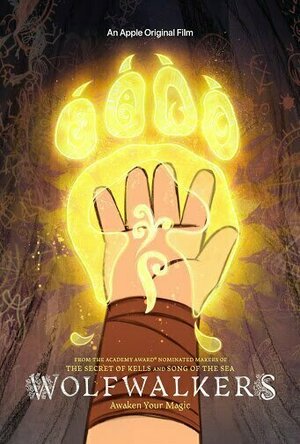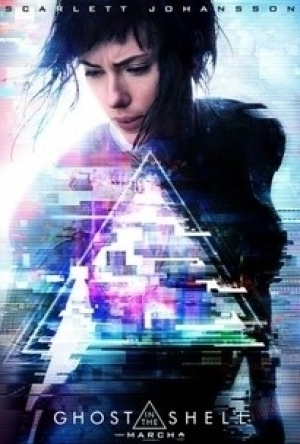Emma @ The Movies (1786 KP) rated Wolfwalkers (2020) in Movies
Oct 11, 2020
Robyn comes to Ireland with her father, e's been given the job of ridding the area of a pack of wolves that are venturing closer and closer to the town. Keen to hunt just like her father, Robyn sneaks out of the safety of their walled town and into the forest after him. Once there she comes face to face with a wolf, but the encounter isn't what she expected. When she eventually meets Mebh, a wild spirit who lives out in the woods, she discovers what the legend of the wolkwalkers truly means and must find a way to save the pack, and her new friend, from the wrath of the Lord Protector and her father.
The phrase "don't judge a book by its cover" hasn't felt quite so accurate as it does now. When the film starts it has the delicacy of an illustrated picture book (with a hint of Gravity Falls), the colour palette is muted and the strokes look haphazard while being in exactly the right place... and I haven't liked this style of illustration... ever... in the 19 years I was in the book industry. It feels old fashioned (yes, I know that fits with its story) and I immediately felt myself grumble at the fact I was about to sit through a whole film of it.
Wolfwalkers' story is a nice mix of folk story and themes of family and friendship. We follow Robyn as she tries desperately to break free of societies rules and those of her overprotective father, and the overall effect is a surprisingly motivational film about protecting people and doing the right thing.
The only names I recognised off the cast list were Sean Bean and Simon McBurney, and both had the right tone for this film... though Bean ever so slightly like he wasn't always acting to the best of his abilities... but that's not really noticeable when you get swept up in everything.
Our two young ladies in the cast, Honor Kneafsey as Robyn and Eva Whittaker as Mebh, were a delightful match, and when the pair were together on screen they have an amazing chemistry together.
But I want to talk about my favourite thing, and that is very specifically, Mebh. Casting, animation, script, she gets the best of everything that was thrown at this film. Her style is so amazingly accurate for the tale and her story and you can see it in every scene. Her wild characteristics, her playful nature, had all been carefully added to every moment we see her. Whittaker's enthusiastic and emotional vocals bring it all to life in such a wonderful way. Mebh is a delightful creation and full of comedic moments that really made me smile... and that hair... brilliant.
Wolfwalkers' animation (by Cartoon Saloon) might not have been to my taste in the beginning but, with the story and the amazing characters, I soon started to forget about my initial peeves. The design of everything really helps to explain the surroundings, the light and dark of the forest when we first encounter it and then evolves as we progress. The visuals when the townies start encroaching are sad but have a stunning reality to them and in the run-up to the end of the film the way they portray those events is a massive change to the style and makes for a harrowing watch. They've also come up with an ingenious way of showing the wolves and the magic that they're regarded within the story, it's an impressive visual.
All of these wonderful things were topped off with a beautiful soundtrack. Everything fits perfectly, particularly the song "Running With The Wolves" by Aurora, which gave me chills to hear.
Starting this film with such a negative feeling I really didn't think I'd be able to turn it around, but as I watched on and got pulled deeper into the tale and the characters, well, you can tell by my rating that my mind was quickly changed. Wolfwalkers was a beautiful and emotional ride that I would not hesitate to recommend to anyone.
Originally posted on: https://emmaatthemovies.blogspot.com/2020/10/wolfwalkers-movie-review.html
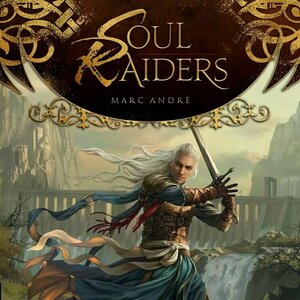
Soul Raiders
Tabletop Game
Tomorrow is the day: you will pledge yourself to the ancestral order of the Soul Raiders, in the...
Bob Mann (459 KP) rated Ghost in the Shell (2017) in Movies
Sep 29, 2021
Johansson is a stunning actress, with unquestionably a stunning figure that she loves to show off, but you would have to start questioning her film choices: since there is hardly a hair’s breadth between the emotionally reserved superhero depiction here and her recent roles in “Lucy” and “Under the Skin“. With her other ongoing “Avengers” superhero work as Natasha Romanoff, and nothing much else beyond that other than brief cameos (“Hail Caesar“, “Hitchcock“) and voice work, its all getting a bit ‘samey’: I’d like to see her get back to her more dramatic roles like “Lost in Translation” that really launched her career.
Anyhoo, back to this flick. Set in the dazzling fictional Japanese city of Niihama, Johansson plays a terrorist victim saved only by having her brain transplanted into an android by the Hanka corporation. In this time (40 years in the future) human ‘upgrades’ with cybernetic technology are commonplace, but Major is a ‘first of a kind’ experiment. Hanka are not pure humanitarians though, since they have turned Major into a lethal fighting weapon with powers of invisibility and lightning reactions. She works for a shadowy anti-terrorism unit called Section 9, led by the Japanese speaking Aramaki (Takeshi Kitano, “Battle Royale”).
The upside of having no human form is that if you get burned or blown up, the team of cyber-surgeons back at Hanka, led by Dr. Ouelet (Juliette Binoche), can rebuild her – – they “have the technology” to quote another bionic hero.
But all is not necessarily well in the idyll of anti-terrorist slashing and burning. Major suffers from recurring ‘glitches’ of memories from her past life: a life that she has no clear memories of. Her latest mission against a deformed and vindictive terrorist called Kuze (Michael Pitt) progressively resurfaces more of these memories, since Kuze clearly knows more about Major than she does.
“Ghost in the Shell” looks glorious, with the Hong Kong-like city being in the style of Blade Runner but with more holograms. (What exactly the holograms are supposed to be doing or advertising is rather unclear!). The cinematography and special effects deserve an Oscar nomination.
Given the film is based on an original Manga series, written and illustrated by Masamune Shirow and well known for its complexity, this Hollywood version has a surprisingly simple and linear story. As such it may disappoint the hoard of fans who adore the original materials.
Treating it as a standalone film, it should have an emotional depth beyond the superficial action, dealing as it does with loyalty and family ties. However, the scripting and editing is rather pedestrian making the whole thing a bit dull. Johansson and Pilou Asbæk, as her co-worker Batou, breathe what life they can into the material; but Binoche is less convincing as the Dr Frankenstein-style doctor. The best act in the piece though is Takeshi Kitano as the kick-ass OAP with attitude.
Where I had particular issues was in some of the detail of the action. ‘Invisibility’ is an attribute that needs to be metered out very carefully in the movies: Harry Potter just about got away with it; in “Die Another Day” it nearly killed the Bond franchise for good. Here, exactly how the androids can achieve invisibility is never explained and I disliked that intently. Similarly, the androids can clearly be physically damaged, yet Major seems to start each mission by throwing herself headfirst off the tallest skyscraper. Again, never explained.
Even though the premise, and the opening titles, brought back bad memories of that truly terrible Star Trek episode “Spock’s Brain”, this is a dark and thoughtful adaptation with great CGI effects but unfortunately its pedestrian pace means it is one that never truly breaks through into the upper echelons of Sci Fi greatness. Worth a watch though.
David McK (3673 KP) rated The Shepherd's Crown in Books
Jan 28, 2019
Those four words were always going to make a long-time Discworld reader feel quite emotional, making it hard to objectively review the novel itself: are you reviewing this last peek into Pratchett's mirror reality, or are you reviewing the entire 41-book series? I'm going to try both:
THE SERIES
The first Disworld book I read (I'm pretty sure it was [b: Pyramids|64217|Pyramids (Discworld, #7)|Terry Pratchett|https://images.gr-assets.com/books/1439098306s/64217.jpg|968512]) wasn't actually the first in the series (that would be [b: The Colour of Magic|833512|The Colour of Magic The Illustrated Screenplay|Vadim Jean|https://images.gr-assets.com/books/1347346368s/833512.jpg|17589693]), although I did later go back and read the earlier works. Reading them in order released (as opposed to one of the numerous Discworld Reading Order Guides: I'm quite partial to the 'Unofficial Discworld Reading Order Guide'), you can see how Terry Pratchett's writing style evolved, how he moved from outright satire to a more subtle comedy fantasy that holds a mirror up to real-world issues. Personally, I feel he was at his best at around the mid-way point of the series (say, [b: Maskerade|64305|Maskerade The Play|Terry Pratchett|https://images.gr-assets.com/books/1170622047s/64305.jpg|62427] or [b: Men at Arms|7557548|Men at Arms The Play|Terry Pratchett|https://images.gr-assets.com/books/1353573652s/7557548.jpg|9910828], after he'd found his feet (so-to-speak), but before the 'embuggerance' of his posterior cortical atrophy set in and the novels - perhaps understandably - started becoming almost too serious.
Throughout the series, there was a rich tapestry of characters introduced, from CMOT Dibbler through to the Patrician of Ankh-Morpork, with certain groups of characters (e.g. The City Watch) effectively becoming a sub-series in their own right. One of those groups - Granny Weatherwax (first introduced in [b: Equal Rites|34507|Equal Rites (Discworld, #3; Witches, #1)|Terry Pratchett|https://images.gr-assets.com/books/1407706800s/34507.jpg|583611] and The Witches of Lancre (first introduced in [b: Wyrd Sisters|233664|Wyrd Sisters The Play|Terry Pratchett|https://images.gr-assets.com/books/1388363090s/233664.jpg|17589683] - would later themselves have 'guest spots' in another group of such characters, ostensibly written for Young Adult Readers but still very enjoyable for older; the Nac Mac Feegles (Crivens!) and Tiffany Aching, both of who first appeared in [b: The Wee Free Men|7881001|The Wee Free Men The Beginning (Discworld, #30 & #32)|Terry Pratchett|https://images.gr-assets.com/books/1388181365s/7881001.jpg|22017239]. Which nicely brings me to:
THE NOVEL ITSELF
'The Shepherd's Crown' sees a return of both Tiffany Aching, now a young Witch setting out on her career path, and those Nac Mac Feegles. There's a strong sense of change throughout, kicked off by the surprising early exit of a previous major character in the entire series, leading to old foes - the Elves - to try to make their way back into the world. These Elves, remember, are *not* the dainty do-gooders of Tolkien: these are nasty, malicious, self-serving creatures who last attempted to invade in [b: Lords and Ladies|34529|Lords and Ladies (Discworld, #14; Witches #4)|Terry Pratchett|https://images.gr-assets.com/books/1469186110s/34529.jpg|1185086], before eventually being defeated by Granny Weatherwax, Nanny Ogg and Magrat Garlik. Those three characters make a return in this, as well as bit-parts for the Arch-Chancellor of Unseen University, Ponder Stibbons (and HEX) alongside King Verence and the Patrician. Despite all these, the novel, however, is really Tiffany's story, and of how she finds her feet in the circumstances into which she is rather abruptly thrown. There's also a plot element that recalls [b: Equal Rites|34507|Equal Rites (Discworld, #3; Witches, #1)|Terry Pratchett|https://images.gr-assets.com/books/1407706800s/34507.jpg|583611]: that of a person wanting to do a role that is generally considered to be that for a member of the opposite sex.
As always, footnotes are present and correct, with the novel even raising a few laugh-out-loud moments. While the story does finish with the words 'THE END', the world itself will continue on: all that has come to an end is our ability to peek into it.
In the words of the Nac Mac Feegle: "Waily waily waily ..."
Rating for the series: 5*
Rating for the novel: 4*
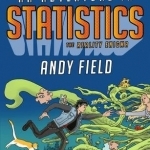
An Adventure in Statistics: The Reality Enigma
Book
Shortlisted for the British Book Design and Production Awards 2016 Shortlisted for the Association...
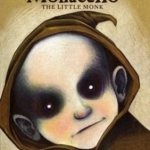
Monacello: The Little Monk: Book 1
Geraldine McCaughrean and Jana Diemberger
Book
A haunting legend from the Undercity of Naples "Goblin" "Gremlin!" "Demon!" Strange little creature....
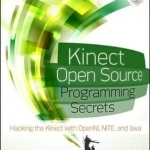
Kinect Open Source Programming Secrets: Hacking the Kinect with OpenNI, NITE, and Java
Book
Program Kinect to do awesome things using a unique selection of open source software! The Kinect...
Sarah (7800 KP) rated Crime Scene: The Vanishing at the Cecil Hotel in TV
Feb 22, 2021
The 4 episode documentary series focuses on a notorious hotel in downtown L.A, Hotel Cecil, and the disappearance of a Canadian student, Elisa Lam, who went missing from the hotel in unexplained circumstances and who was later found dead. On paper this has everything a true crime lover wants: CCTV footage of the victim acting strangely, a creepy hotel with a dodgy history and a lot of strange and unusual circumstances, which culminates in Elisa Lam’s decomposing body being found in a water tank on the hotel roof days after her disappearance, the same water that the hotel guests have been drinking all along. It’s a truly fascinating story and if done properly, would have been very interesting. However in the hands of director Joe Berlinger, the disappearance of Elisa Lam has been turned into a dull, drawn out affair that dangerously glamourises baseless conspiracy theories.
One of the two main problems is that this documentary has been drawn out over 4 hour long episodes, when realistically the true story of Elisa Lam’s disappearance could still have been told effectively in an hour, maybe two maximum, without detracting from the facts. And I guess that’s really the problem with The Vanishing at the Cecil Hotel, it isn’t necessarily all that concerned about the facts but rather just wants to create a film-like entertaining story, with the facts almost an afterthought crammed into the final parts of the last episode. It features lengthy and pointless interviews from other guests and tourists to try and give us a feel of what life at the Cecil was like, and these are entirely unnecessary, as some short exposition from the hotel manager or officers involved would’ve sufficed. Every part of this case is stretched so thinly that you almost lose track after having to weed out the truth and facts amongst all the irrelevant interviews and chatter. It isn’t helped by the narration of some of Elisa’s Tumblr posts, which comes across as cheesy and irritating rather than emotional and meaningful like it was probably intended.
What is most irrelevant and dangerous about this documentary, and the second main problem, is the focus on internet sleuths. These are mostly YouTubers who have spent hours dissecting every aspect of the case and have put forward many outrageous theories, all of which are completely laughable. But instead of mocking these idiots, this documentary glamourises them and their theories, and has dedicated more of it’s runtime to them than it has to any of the real life detectives and investigators involved. Watching these people wheel out one ridiculous theory after another had me wanting to throw my remote at the screen to make it stop. The theories ranged from the questionably plausible (foul player or murder) to the downright ludicrous - someone copying the film Dark Water, possible links to the Lam-Elisa TB test and a vast cover up jointly orchestrated by the police, hotel management and coroners staff are the ones that made me laugh and cringe the most.
All jokes aside, this focus on internet sleuths is extremely damaging and dangerous and this is illustrated by the awful accusations they made about Pablo Vergara aka Morbid, who’s only crime was to make music that wouldn’t be considered mainstream. If this documentary had focused on slamming these people and highlighting the dangers of them getting involved, then it would’ve redeemed itself. But it doesn’t, it gives them centre stage and debunking their theories is almost an afterthought. They aren’t even condemned for their treatment of Pablo despite the obviously long lasting effects on his mental health. These people are crazy and this only serves to highlight the huge problem with internet, video streaming sites and social media – how Joe public can ever think they know better than qualified pathologists and investigators is beyond me. And how this documentary can indulge and glamourise these people is even worse. From working a day job in the emergency services, I know how damaging this sort of interference and public perception can be.
The story of Elisa Lam’s disappearance at the Hotel Cecil is undoubtedly an interesting one. However in Crime Scene: The Vanishing at the Cecil Hotel, the real story has been mauled and disrespected by the focus and respect given to the internet sleuths and their absurd theories. I feel like I’m being generous giving it a 3, it made me so angry.
Purple Phoenix Games (2266 KP) rated Mysterium in Tabletop Games
Jul 6, 2019
DISCLAIMER: There are several expansions to this game, but we are not reviewing them at this time. Should we review them in the future we will either update this review or post a link to the new material here. -T
Mysterium is a cooperative game of deduction in which players take on the roles of mediums trying to solve the murder, and one player takes on the role of the ghost who is haunting the estate. Every turn, the ghost sends Visions (in the form of illustrated cards) to each medium in an attempt to guide them to investigate different suspects, locations, and potential murder weapons. The visions are not always clear, however, so the mediums must use their imaginations and deduction skills to decipher any hidden hints or clues contained in the visions. If all mediums are able to identify their suspects/locations/weapons before the 7th hour has passed, the ghost then sends one final Vision to all mediums to guide them to the true culprit. After receiving and deciphering this final Vision, the mediums must all vote on whom they believe the culprit to be. If the majority of the mediums select the correct culprit, the mystery has been solved and the ghost can be laid to rest! If not, however, the mystery remains and the ghost must wait an entire year before the magic ritual can be performed again…
I love Mysterium. I seriously think it’s a great game. One reason why I love it is because it’s a deduction game that is cooperative. Most of the deduction games I’ve played before are competitive or involve some form of bluffing. And I’m pretty terrible at lying, so I never really do well in those. What I like about Mysterium is that you’re still trying to figure out your own cards, but you’re allowed (and encouraged!) to ask your fellow mediums for their thoughts. It’s cool to see how everyone interprets the Vision cards because someone might notice or see something on your Vision card in a way you didn’t think of on your own. Your friends may be able to provide insight to help you through the game, just as you can help them decipher their clues. Especially since the game can’t be won unless everyone has found their cards, it really is in your best interest to cooperate and help everyone out.
Another thing I love about Mysterium is that it can be played with up to 7 players. I’ve probably mentioned this before, but I have 4 siblings, and sometimes finding engaging games for 5+ people can be pretty hard. Not an issue at all with Mysterium. It’s actually a favorite of my siblings to play, so I always bring it with me for holidays and family gatherings! I personally think Mysterium works better at higher player counts, so that really bodes well for me and my family!
One final thing I really like about Mysterium is the dynamic created between the mediums and the ghost player. The ghost is allowed to communicate with the mediums through visions only – no verbal communication at all! That means that as the ghost player, you’re trying to anticipate how each medium will interpret different visions so you can give them the one that will guide them to their specific card. When you’re a medium, you’re trying to think how the ghost player thinks – why did they give me this card and what did they want me to notice? In either role, you’re trying to get in the mind of your counterpart, and that just adds a fun little bonus twist for me.
I think Mysterium is a great game. Deduction drives the game and it keeps you constantly engaged, questioning every card you see. It’s an entertaining and lighthearted cooperative game for any player count, and it thrives with great non-confrontational player interaction. Mysterium was one of the first games in my collection – I was in my FLGS, picked it up off the shelf, and having done no research on it at all, I bought it. And boy oh boy am I glad I did. Definitely give Mysterium a try – it’s a good blend of mystery and fun! Purple Phoenix Games gives it an ethereal 11 / 12.
Industrial Water Resource Management, Challenges and Opportunities for Efficient Water Stewardship
Book
Water is one of the most important resources of all, Businesses, communities, and ecosystems...
